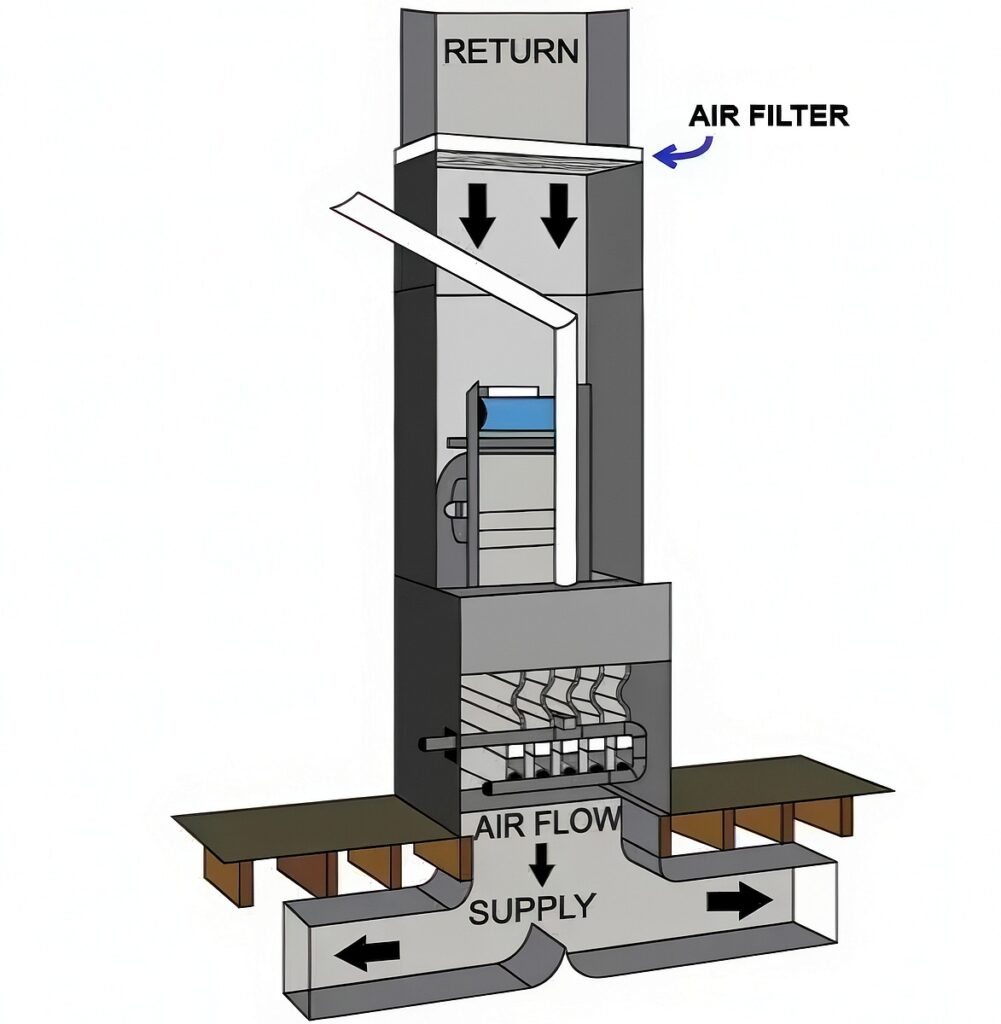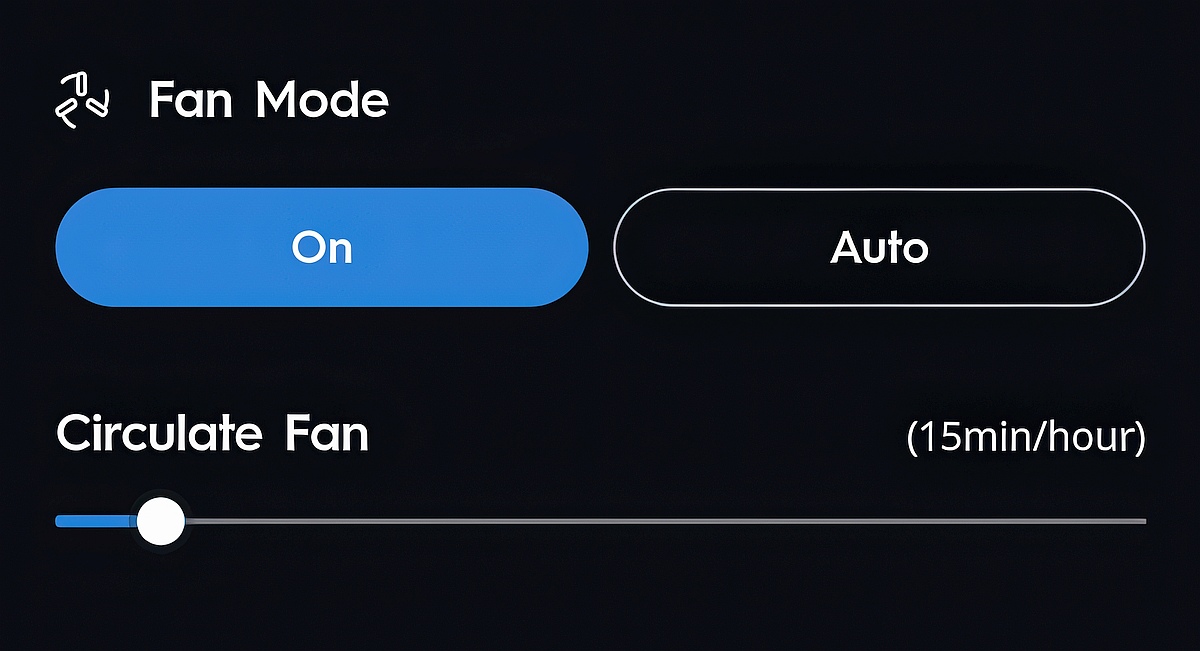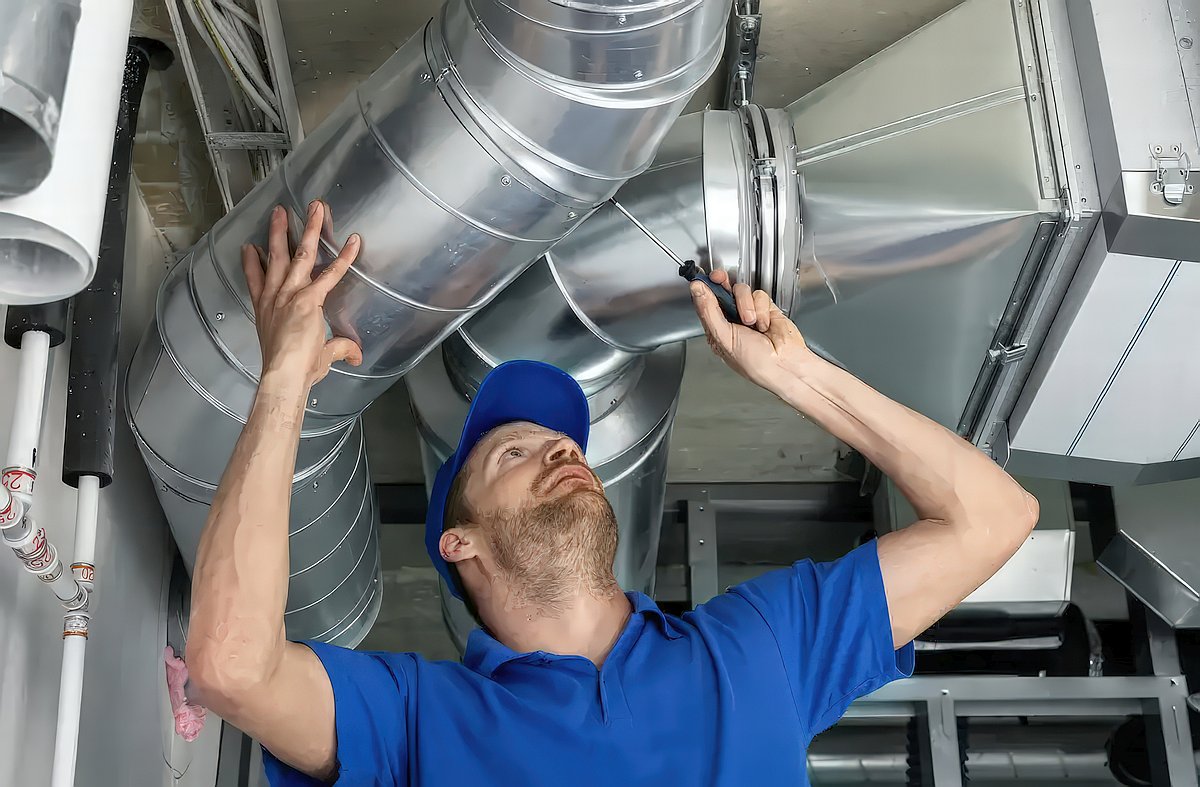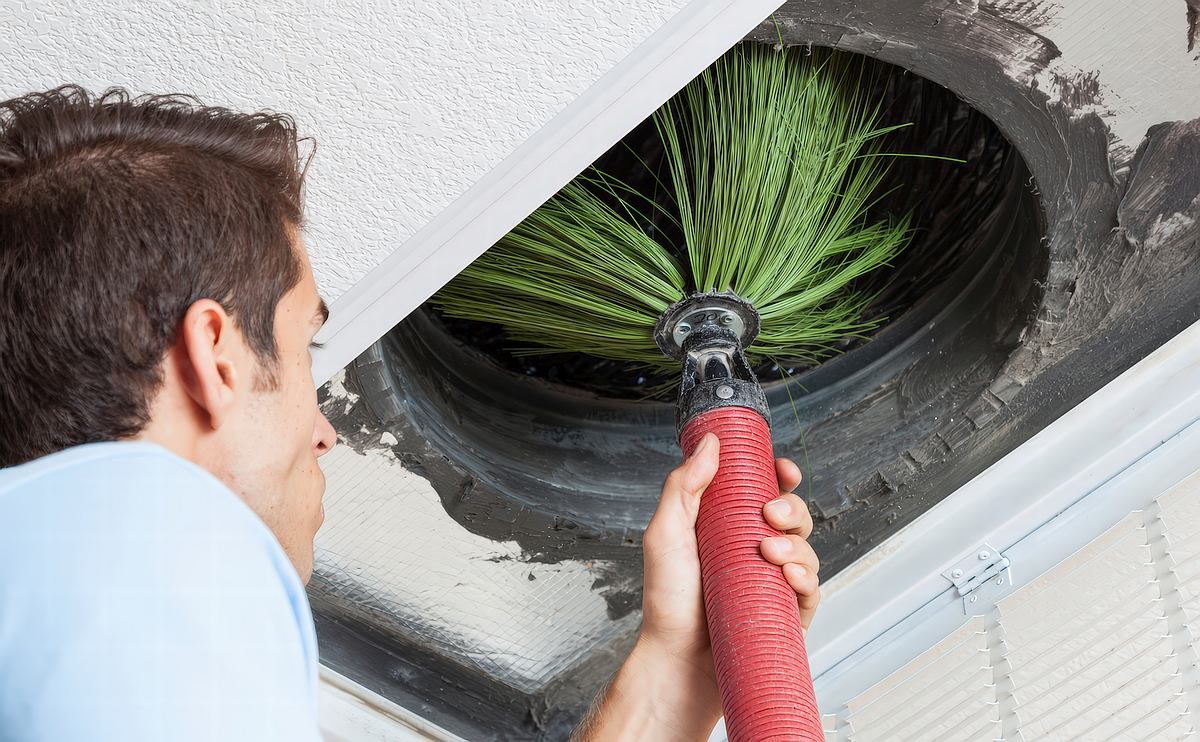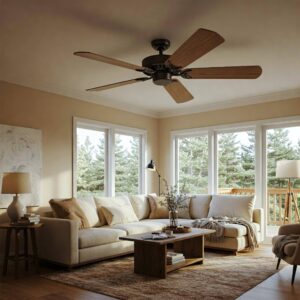To maintain healthy indoor air quality, it helps to know where the air circulating through your home comes from.
Specifically, many homeowners ask whether the furnace fan brings in outside air to circulate through the ductwork—or does it originate from within the home and is simply “recycled”?
Here’s what you need to know…
Does the Fan On a Furnace Bring in Outside Air?
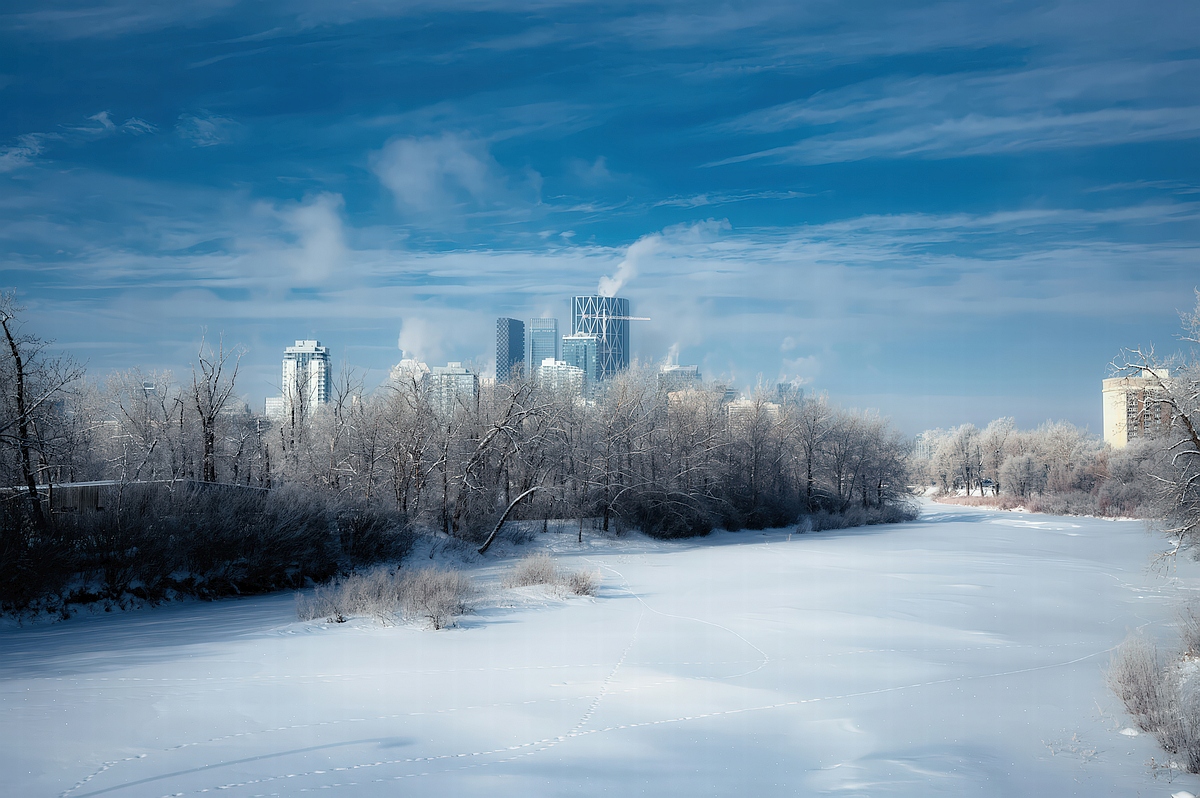
The furnace fan doesn’t usually bring in outside air. When the fan turns on during the heating cycle, a forced-air furnace will circulate air already inside the home.
However, some HVAC systems have a fresh air intake that can bring in outside air when the fan is running to improve ventilation and indoor air quality. This is generally more common in commercial properties than homes but high-efficiency home systems may also include this feature.
MAKE THE RIGHT HEATING & COOLING DECISIONS…
For over two decades, Alberta Mountain Air has helped Calgarians solve heating and cooling problems and maintain ideal comfort levels. Get in touch online for a quote.
How Does a Furnace Get Fresh Air?
The HVAC equipment’s job is not only to heat or cool your home but also to help maintain healthy and comfortable indoor air quality.

In most central HVAC systems, the furnace, heat pump or air conditioner takes the air from inside your house, heats or cools it, and then sends it back to the rooms through the ductwork. Outside air or “replacement air” is not mechanically brought into the building. The furnace fans simply move air around after it has been heated.
So how does fresh, outdoor air enter your home? Where does the HVAC system get its air from?
Usually, outside air enters the home in one of three ways:
- Through natural ventilation, e.g., open windows and doors.
- Infiltration, where outdoor air flows into the house through openings and cracks in walls, floors, and ceilings, and around windows and doors (usually more so in older or poorly constructed homes).
- Mechanical means, such as through outdoor air intakes associated with the HVAC system or outdoor-vented fans that intermittently remove air from a single room, such as bathrooms and kitchens.

If air enters the home from outside in one of these three ways, it will get sucked into the HVAC system and circulated by the fan after it is heated by the furnace.
After furnace installation, combustion air feeds the furnace automatically before the heating process begins.
Return Vents and Supply Vents
Most homes in Alberta use gas-powered forced air furnaces that circulate clean, heated air throughout the home—but understanding the flow of the air through the home can help you troubleshoot furnace problems.
Here’s what happens:
- Return air vents: large vents usually located centrally, high in the walls or ceilings, start the process by sucking in air from the rooms in your home.
- Air filters: these trap dust, dirt, pet dander, and other particles from the air, cleaning it before it is sent for heating.
- Heating: by combustion in a gas-powered furnace, which heats a coil system over which the air blows.
- Blower fan: the clean, warm air reaches the blower fan, which moves the air through the HVAC system.
- The ductwork: the heated air circulates through a network of sealed and insulated piping to maintain the desired temperature in the rooms of your home.
- Supply air vents: these are located in floors, walls or ceilings, and their role is to deliver clean, warm air from the ductwork directly into the rooms of your home.
You should feel warm air blowing out of the supply vents if you hold your hand to them—unlike the return vents. The supply vents are also usually smaller than the return vents and can be adjusted.
What Happens When You Switch the Furnace to “Fan Mode”?
Most HVAC systems have a fan mode on the thermostat settings. You either turn this to ON to run continuously or to AUTO to only run during the heating cycle. Either way, it won’t bring in outside air into your home. It will simply start moving air that is already in the home through the ductwork and out through the supply vents in your home.
HVAC systems should generally run the fan in AUTO mode for best results.
Fresh Air Intake Systems
The building code establishes a set of requirements for ventilating homes in Alberta to maintain health and safety standards.
Conventional furnaces installed in tight crawlspaces often suffer from stale, contaminated air which is simply circulated around the home by the fan. This can be avoided with a fresh air intake system.
Ventilation and Humidity Control
Some modern, high-efficiency HVAC systems have a fresh air intake to bring in outside air when the fan is running, improving ventilation and indoor air quality.
These systems send new, outside air to the furnace for combustion through a duct from the exterior vent. They are particularly beneficial in areas with poor ventilation or if indoor air quality is a concern.
Homes in Alberta may use Energy Recovery Ventilators (ERVs) or Heat Recovery Ventilators (HRVs). These devices are air-to-air heat exchangers that exchange stale indoor air with fresh outdoor air and transfer heat between the incoming and outgoing air streams to save energy.
Fresh air intakes, such as HRVs, should be run more often in the winter to control humidity and prevent “attic rain”.
Alberta homes may also incorporate humidifiers or dehumidifiers into the HVAC system to improve indoor air quality, maintain comfort levels, prevent mold and mildew, and maintain the ideal indoor humidity levels all year round. Simply installing ceiling fans can also help with maintaining good airflow in your home.

How Can You Maintain Fresh Air in the Home?
So, with all this air being circulated through the ductwork and around your home, how do you maintain its quality and cleanliness?
Clean, filtered air that is heated or cooled efficiently and can travel unobstructed through the ductwork is the heartbeat of any HVAC system.
With the cost of a furnace such a major contributor to most home budgets in Alberta, it pays to look after your unit. As well as protecting your investment, the following steps will help maintain performance, efficiency, health, safety, and comfort in your home:
- Change the HVAC air filters regularly (every 1-3 months) if your system uses disposable filters or clean reusable filters (more often if you have pets or use the furnace a lot).
- Schedule periodic inspections and cleaning of the ductwork and fix any leaks or problems to prevent air loss.
- Clean the supply and return vents regularly and keep them unobstructed to ensure good airflow.
- Schedule an annual furnace tune-up and furnace cleaning—ideally, before the winter cold sets in and you begin to use your furnace every day.
Is Duct Cleaning a Waste of Money in Alberta?
Some homeowners think duct cleaning is a waste of money but, depending on the quality of the air circulating through your home, periodic cleaning can make an important difference to the efficiency and safety of your HVAC system—and to how long your furnace lasts.
Duct cleaning is recommended every 3-5 years but it may be required more often if there are smokers or pets in the home, if anyone suffers from breathing conditions or if home improvement work has recently kicked up a lot of dust and debris.
Duct inspections and cleaning are also recommended if there are unresolved issues with the air quality in the HVAC system that cannot be explained with other common troubleshooting steps.
FAQs
Keeping the fan on 24/7 can maintain more even cooling throughout the home and reduce the strain from constantly starting and stopping. However, it can also increase energy bills and the need to change air filters. The recommended option is to keep the fan on its AUTO setting.
If your HVAC system has a fresh air intake device, you will see a grilled vent near the furnace—or follow the vent to its source, which could be in the attic or on the outside of your home. If there’s a screen, it’s an intake. If the vent has a flap, it’s an exhaust.

HVAC systems are essential for maintaining indoor air quality and conditioning the air so it is healthy and comfortable.
If your indoor air feels stuffy, contaminated with dust or other particles or something else feels wrong with your heating or cooling system, don’t allow the problems to get worse. Book a professional furnace inspection and tune-up.
Our HVAC professionals are SAIT-certified and help Alberta homeowners make the right heating and cooling decisions. If you’re in Calgary and considering your heating options this winter, contact us online.
